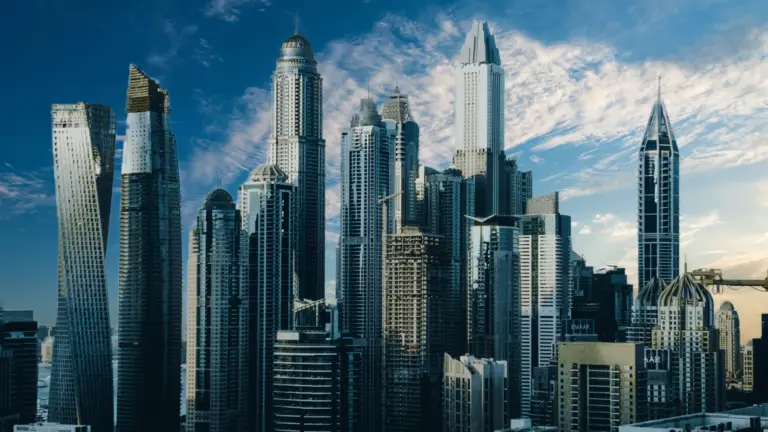Skyscrapers are imposing structures that dominate city skylines and have become iconic symbols of modern architecture. These majestic masterpieces defy engineering limits and represent humanity’s progress and innovation. In this blog, we will explore the construction of skyscrapers, their advantages, interesting facts, and the fascinating world behind these impressive structures.
To view AH Construction’s projects click HERE
Towering Heights:
Defying Gravity One of the most notable features of skyscrapers is their towering height. These structures far exceed conventional buildings and reach heights that seem to defy gravity itself. Skyscrapers are constructed with steel and reinforced concrete, providing them with the strength and stability required to support heavy vertical loads. Furthermore, the incorporation of innovative engineering techniques, such as deep foundation systems and steel structural frames, allows for the construction of skyscrapers that soar into the sky.
Maximizing Limited Space in Cities In densely populated urban areas, available construction space is limited. Skyscrapers offer an efficient solution by utilizing vertical space. Instead of sprawling horizontally, skyscrapers rise into the air, allowing cities to maximize the capacity of their land and accommodate more people and activities. This verticalization of cities helps to reduce uncontrolled urban expansion and preserve surrounding green and natural spaces.
Architectural Icons:
Symbols of Prestige and Power Skyscrapers are more than just functional structures; they are also symbols of prestige and power for cities and businesses. Cities compete to have iconic skyscrapers that become their architectural landmarks and tourist attractions. On the other hand, companies construct skyscrapers as their headquarters to convey an image of success, solidity, and dominance in their industry. These structures become globally recognized landmarks and represent the human achievement of reaching new heights.
Interesting Facts about Skyscrapers:
- The Burj Khalifa in Dubai, standing at 828 meters, is currently the tallest skyscraper in the world.
- The first recognized skyscraper as such was the Home Insurance Building in Chicago, built in 1885.
- Modern skyscrapers incorporate advanced energy-efficient technologies, such as solar panels and energy management systems, to reduce their environmental impact.
- The Empire State Building in New York, built in 1931, was constructed in a record time of only 1 year and 45 days.
Construction Challenges:
Wind, Terrain, and Seismic Design The construction of skyscrapers is not without challenges. Strong winds can exert considerable pressure on tall structures, requiring the use of advanced design techniques to ensure their stability. Additionally, in earthquake-prone areas, skyscrapers must be designed to withstand seismic forces and minimize risks to their occupants. Structural engineering plays a crucial role in overcoming these challenges, utilizing appropriate damping systems and reinforcements to ensure the safety of the buildings.
Impact on the Urban Environment and Community Although skyscrapers symbolize progress and development, they can also have a significant impact on their urban environment and the surrounding community. These structures can alter panoramic views, cast shadows, and affect wind patterns in their vicinity. Therefore, it is important to carefully consider urban planning and architectural design to minimize negative impacts and ensure harmonious integration with the existing surroundings.
The construction of skyscrapers is an exciting challenge that has led to the creation of impressive structures defining modern cities. These majestic masterpieces not only defy engineering and architectural limits but also offer practical advantages, maximize limited space, and become symbols of prestige and power. However, it is essential to address technical challenges, consider the impact on the urban environment and community, and strive for sustainability in the construction of skyscrapers. This will ensure that these awe-inspiring structures continue to serve as emblematic landmarks and witnesses to human ingenuity in the future.
For more information about AH construction click HERE




